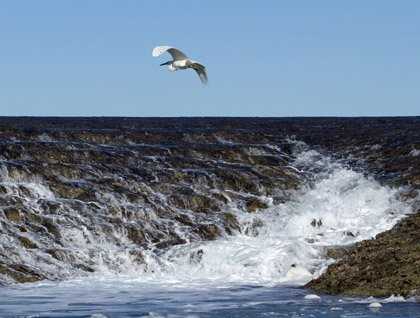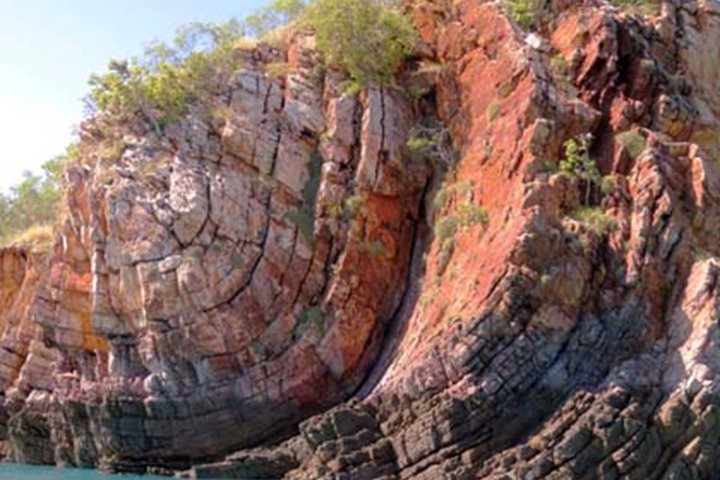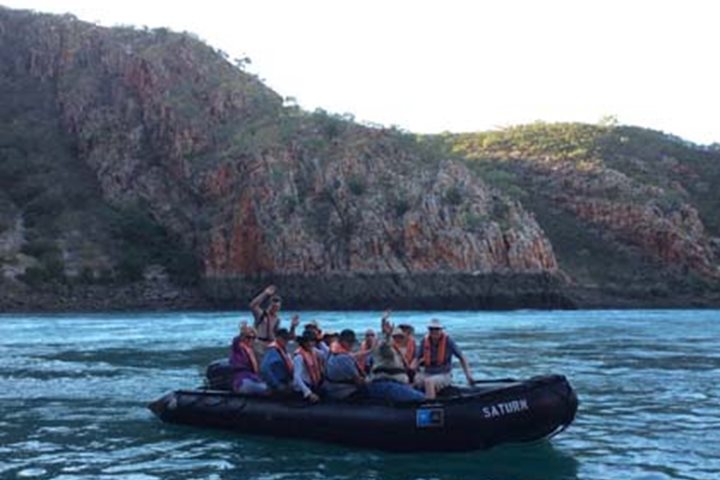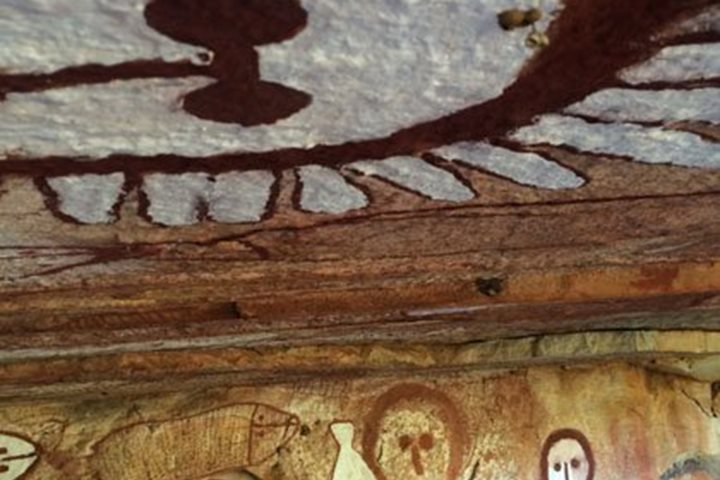Waking to yet another stunningly breathtaking Kimberley sunrise, National Geographic Orion anchored nearby to Montgomery Reef and its neighboring islands. In preparation for the big day ahead, some chose an early morning yoga session with the onboard wellness specialist, whilst others limbered up and strode through their daily 2K walk around and around (and around) Deck 6.
The exercise was with good reason too as we needed real vigor to hike the rugged sandstone boulder country of Raft Point Bluff. The reward at the end was the rich indigenous culture of Wandjina rock art.
But firstly our goal was to traverse the raging waters of Montgomery Reef with the nimble Zodiacs. Phillip Parker King named Montgomery Reef in 1821 after the surgeon of his ship, the Bathurst. The reef’s geomorphology is a complex array of dolomite and sandstone substrate covered in numerous species of algal, mollusk and coral communities. Its 400-square-kilometer area makes it the largest inshore reef in the world. During the low spring tide, thousands of giga-liters of seawater are forced off of the reef flat, cascading down stony terraces and into a wide channel carved out from eons of tidal erosion.
At the mouths of these smaller tributaries, opportunistic wildlife such as turtles, sharks, trevally and batfsh, congregate to feed on the scrumptious morsels that are washed into the channel. As we weaved through turbulent waters, all around us green sea turtles constantly surfaced to catch a breath while eastern reef egrets, both gray and white morphs, stalked prey on the edges of the falls. The morning was truly a photographic delight.
Later in the day we braved our first wet landing onto the shores of Raft Point Bluff. We hopped gracefully from the Zodiac onto the shore that literally crawled with shells occupied by busy hermit crabs. After our welcoming ceremony by the Worora people, complete with fresh ochre on our cheeks, we hiked to the top gallery to view depictions of sacred Wandjina spirits. The Worora custodians gave us a great insight into the story and the art of the Great Fish Chase.
Whether explored from land or sea, the Kimberley showed us its richness not only as a photographic marvel, but also as an ecologically, culturally and spiritually significant place that we have been privileged to visit.







